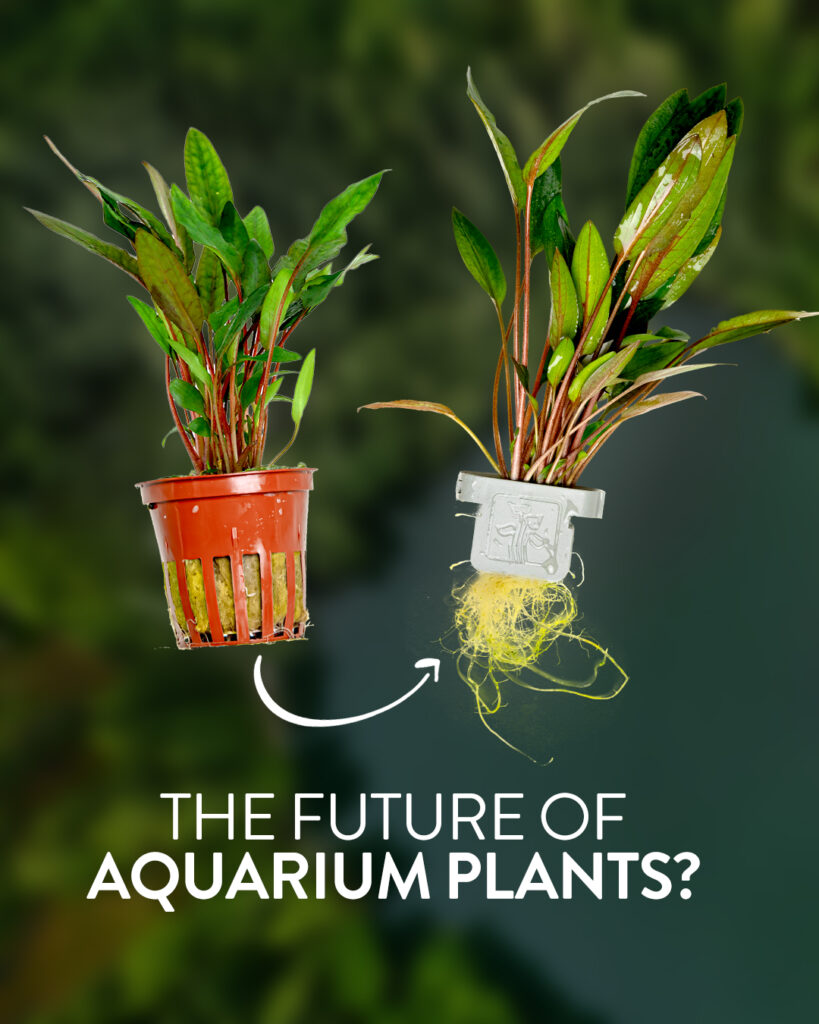
Will the rest of the aquarium plant industry take note?
Tropica Aquarium Plants recently revealed a rethink of the classic potted aquarium plants offered in the aquarium trade. Modern aquarium plants currently come in a variety of form factors, ranging from cuttings still wrapped with lead weights, plants sold in bags and plastic tubes on a shelf, all the way to ultra-clean lab-propagated tissue cultures. Still, potted plants remain a popular option for aquarium retailers, as the plants are displayed in a natural underwater environment. Potted plants offer a convenient way to bundle individual stems of plants together into a manageable unit for retail sale, and plants can actively grow while waiting to be purchased.
Details are sparse, but Tropica’s value proposition is clear. The suggestion is that the new plant clips can replace the functionality of a traditional potted aquarium plant, reducing plastic waste and eliminating the use of rockwool.
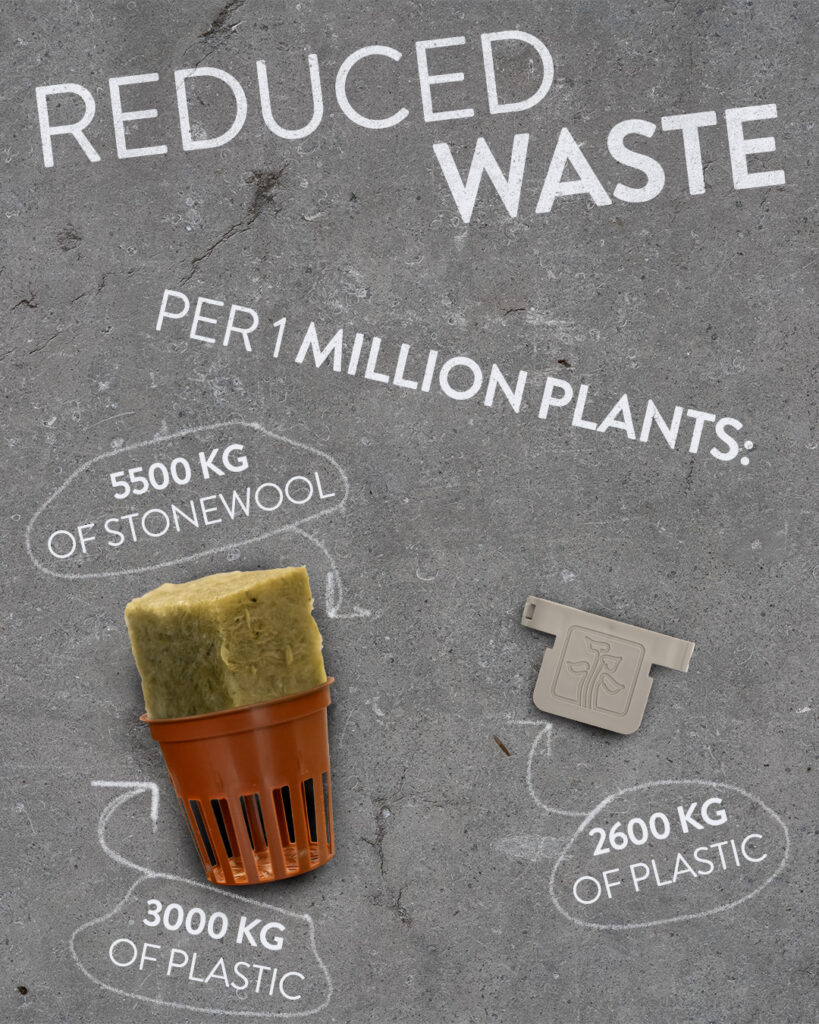
Tropica suggests that for every million potted plants sold, 3000 kg (6614 lbs) of plastic and 5500 kg (12,125 lbs) of rockwool (stonewool) are consumed. By changing to a plastic clip, the company suggests the 100% elimination of rockwool and a 13.3% reduction of plastic.
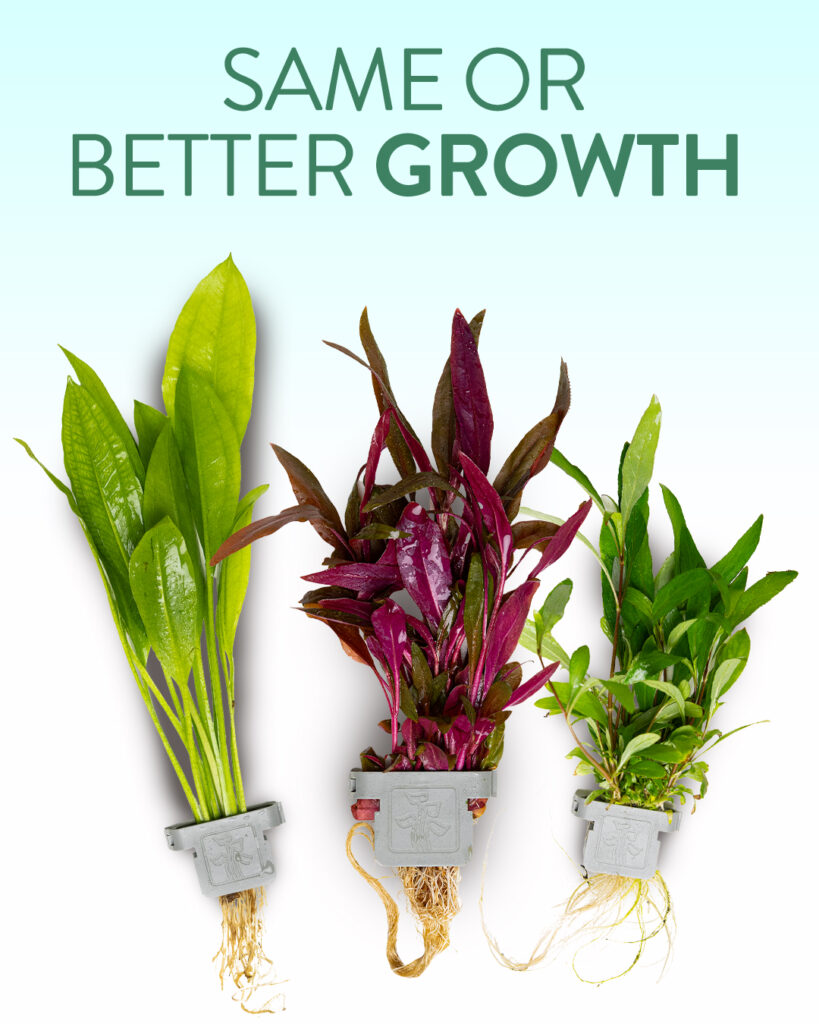
Tropica also remarks that switching from traditional potting methods to clips has no negative impact on plant cultivation, and may even improve growth.
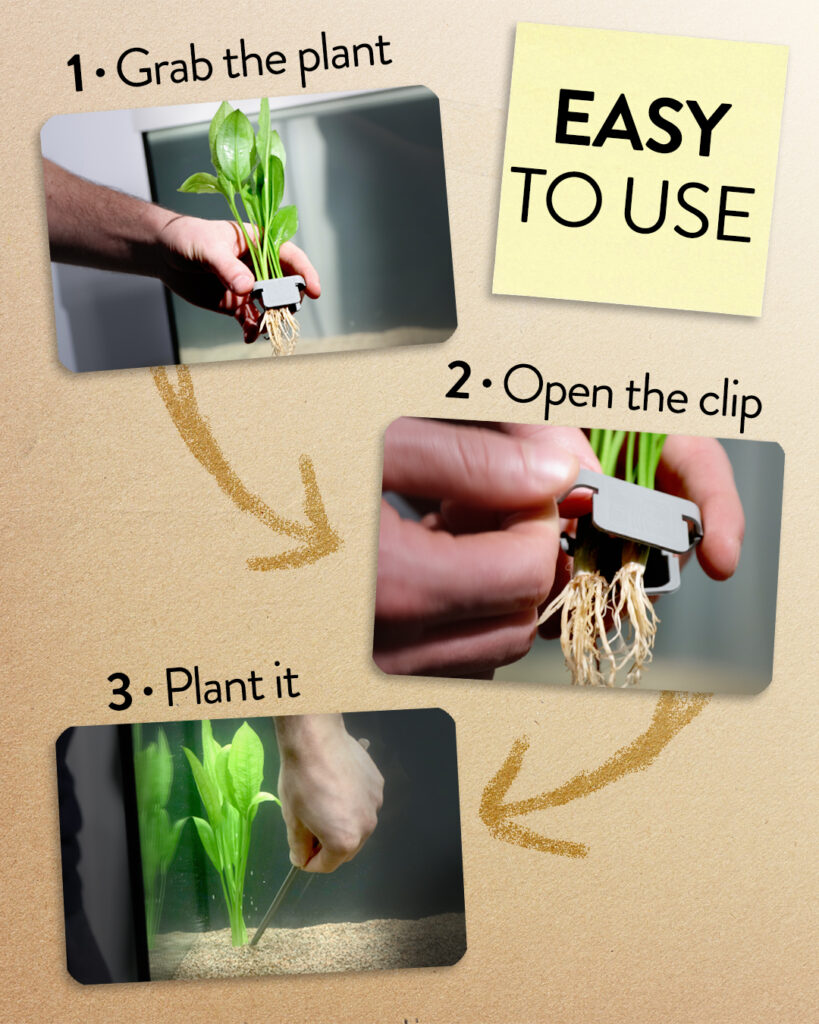
If you’ve worked with typical potted plants, you are familiar with the rockwool waste and bulky underwater net pots left behind. Depending on the plant, getting the roots separated from the material can be a bit of a headache. Tropica argues that using plant clips sidesteps the traditional potted plant with a very easy-to-use replacement.
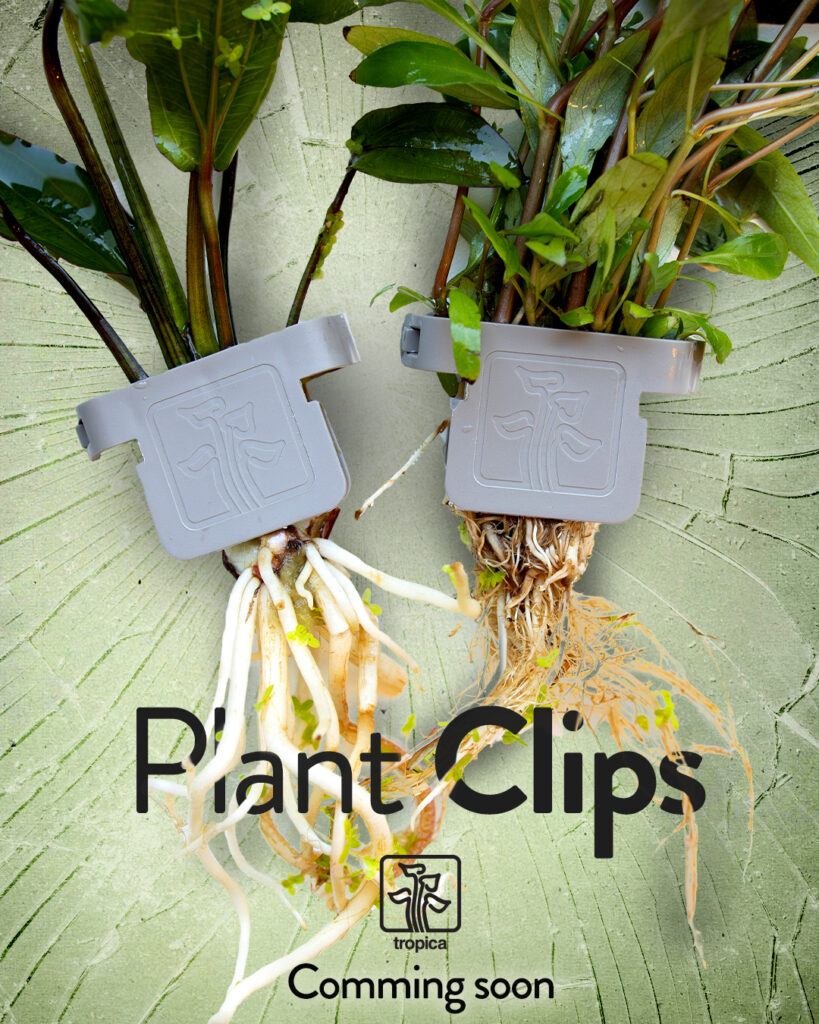
Is this a step forward for the aquarium plant industry? That’s anyone’s guess. It is clear, based on commentary, that some aquarists feel this isn’t enough of a change, most complaining that these plant clips are still using a lot of plastic. Others are on board with any step in a positive direction. While classic pots are reusable, it does seem like the smaller, more compact plant clip better lends itself to getting a second or third life, should an aquarist save them for future plant propagation.
I’ll be curious to see if this fundamental revision of a classic product encourages a change in the industry. I’m also curious how a plastic clip will compare to the larger, heavier options, particularly given that many plastics are not that dense and thus don’t do much to weigh something down. If you get your hands on some of these new Tropica Plant Clips, I’d love to hear your thoughts, so tell us in the comments!






We will see. Do they bury well in the substrate on display before selling?
Plastic consumption is always a concern, but what I find interesting and most commonly ignored is the amount of fertilizer used and waste water, what happens to these by-products? Where do the go?